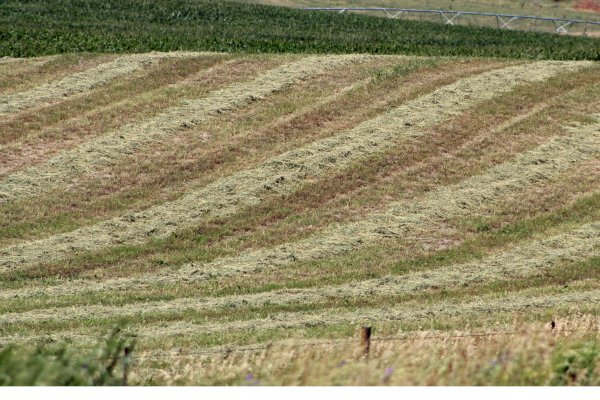
By Bruce Anderson, UNL Forage Specialist
SUCCESS IN 2014 BEGINS IN 2013
Thanks to some favorable weather, fall field work is nearly done – or is it? Maybe you can get a jump on next year’s challenges and opportunities.
I’m great at procrastinating. But when it comes to pasture and hay fields, I’ve learned that problem prevention and advanced preparation is the only way to make significant progress. So today, I’m giving you a laundry list of actions you can still take this fall to make your forage production better next year.
Let’s begin with weeds. Many alfalfa fields are contaminated with mustards, pennycress, cheatgrass, and downy brome every spring. This doesn’t have to happen. Before the ground freezes, spray Sencor, Velpar, Sinbar, or Karmex and these weeds won’t be there next spring.
Similarly, you can avoid letting warm-season grass pastures get overrun by cool-season grasses and weeds. Spray glyphosate or Plateau now while these invaders are still green for cleaner pastures next summer.
Speaking of pasture, is nitrogen fertilizer getting too expensive? Adding clovers or alfalfa to your grass can eliminate your need for any nitrogen fertilizer. Prepare for making this addition by grazing one of your pastures as short as possible this fall to open it up for adding legume seeds early next spring and to slow down its spring growth rate.
Finally, pull soil samples, especially from hay fields but also from some of your pastures, and get them tested this fall. Then use the test results to order fertilizer and maybe even apply it yet this fall if weather conditions still permit.
Don’t be a procrastinator. Act now to reduce hay and pasture problems next year and improve your forage production.
PROFIT OPPORTUNITIES WITH CASH HAY
Persistent spring rain, insect damage, fewer acres, winter injury. What do all these have in common? They are making high quality hay scarce everywhere.
If you’ve been paying attention to this year’s ag news, you realize that high quality alfalfa hay is in short supply this year.
Throughout much of the alfalfa growing region, including here in Nebraska, cool temperatures and persistent rains greatly reduced dairy quality hay production during first cutting this spring. This region also lost alfalfa acres, some due to winter injury but most due to conversion to annual row crops.
This is good news — at least for you hay growers in our area! The market for high quality alfalfa is looking strong again this year.
Just think about this. Suppose someone offered you 250 dollars, or even 150 dollars per ton for your best alfalfa. Could you find other hay, or maybe corn stalk bales, nearby that you could make work for your animals that would cost you less than 100 dollars? If you can, maybe you should sell high, buy low, and pocket the profits.
So, how do you find these buyers. You could post notices at truck stops, place ads in newspapers and magazines, or set up a sign by your driveway. But, there are more effective ways to contact buyers. One is to place your hay on a computer listing in one of the dairy states. Another way is to work with dealers or become a member of a marketing group, like the Nebraska Alfalfa Marketing Association, to take advantage of their market connections. Local extension offices have information on both association membership and computer listings.
You may need some luck and do some work to be able to buy low and sell high. Smart operators look for these opportunities.
For more UNL Beef information go to http://beef.unl.edu